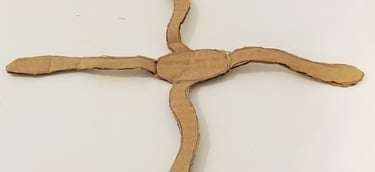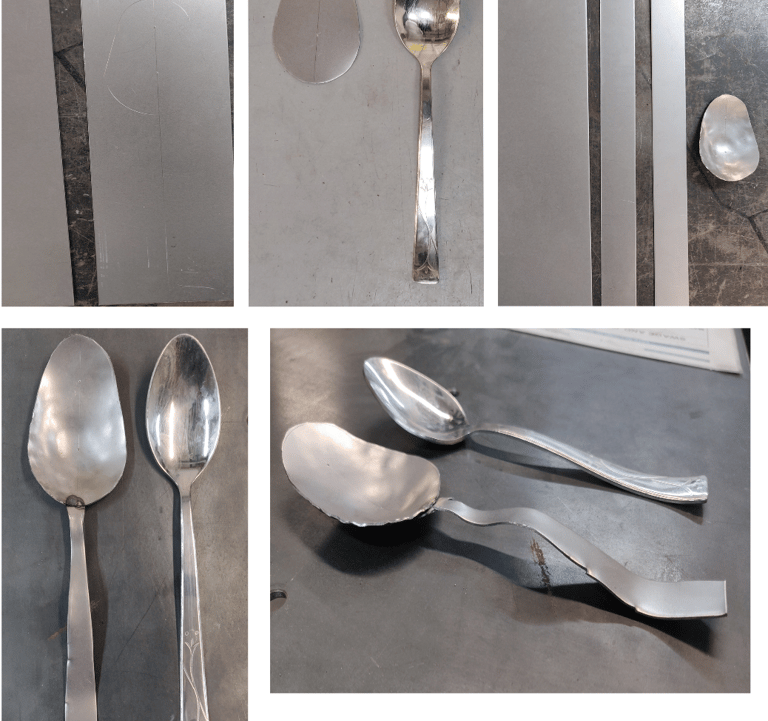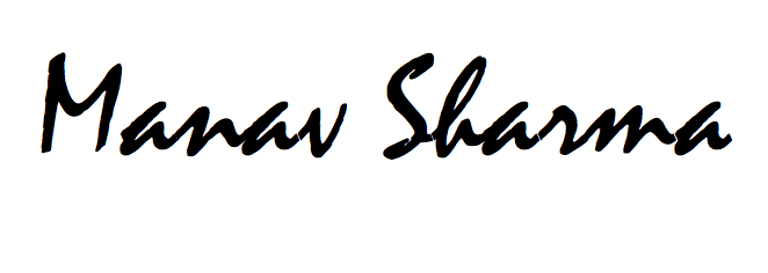Metal Workshop
workshop and idea development
I learned a variety of techniques during my metal workshop orientation, including how to fold, bend, and cut sheet metal. There are several health and safety precautions to keep in mind, including what to wear and how to use equipment. We normally need to wear safety gear in the workplace, such as the supplied gloves, boots, and goggles, to protect ourselves from the numerous dangerous barriers there.
After the metal sheets have been cut, any sharp edges are removed during the preparation of sheet metal by using deburrers. From there, you may mark the locations on a piece of metal that need to be cut or scored using odd-leg dividers, scribers, and rulers. A center-punch can also be used to indicate where holes need to be drilled or punched. Spot welding and the use of pop rivets in a rivet gun are common connecting methods.
The ability to bend and fold metal is made possible by larger machines like the sheet metal roller and sheet metal folder, although they do have limitations. I must use a mallet and mandrel if I want to make tighter rings since the roller, in particular, cannot be used to bend metal into very small cylinders or curves.
I have to create a bizarre hand tool. I've been researching and observing various hand tools that we use mostly everyday such as scissors , spoons , nail cutters and hammer. I spent the workshop working on a bizarre hand tool called a spoon. , which is, in my opinion, the hand tool that almost everyone uses worldwide. I made it useless and bizarre-looking by adding four handles to each side in an attempt to make it seem more strange.




